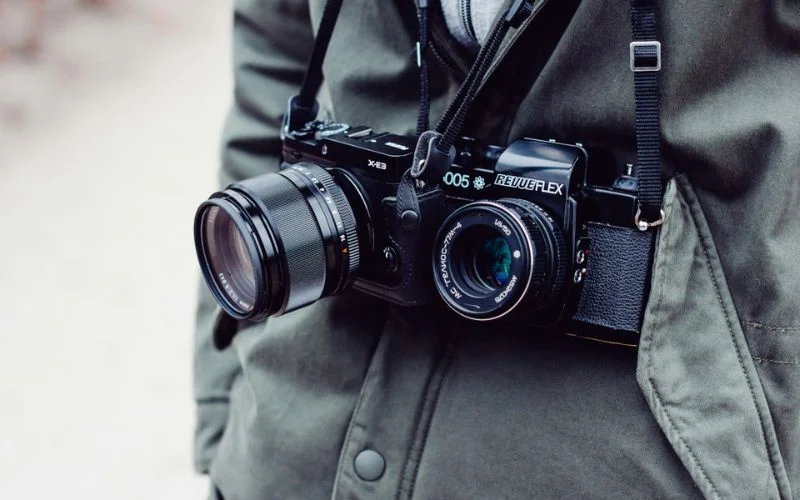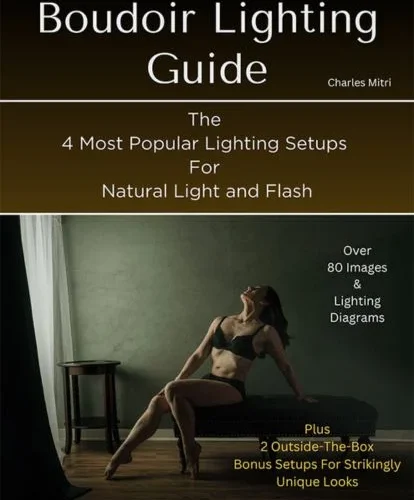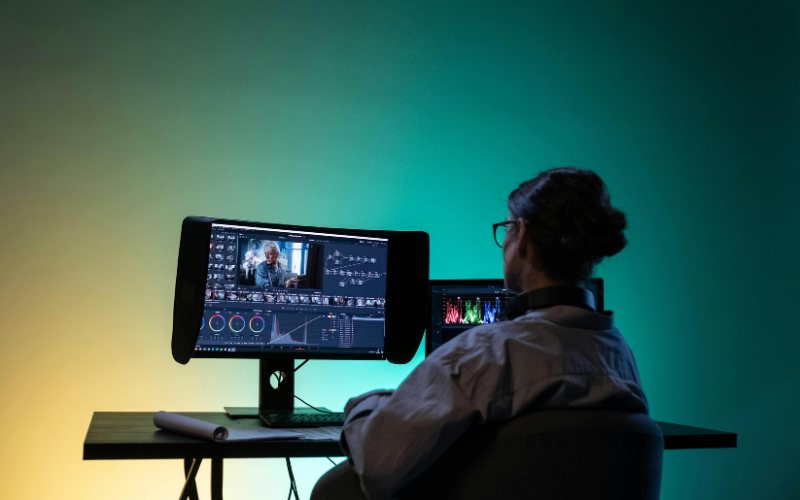If you’re looking to level up your camera gear, you’re likely already familiar with the debate surrounding which is better: a mirrorless camera vs DSLR.
There are several similarities and important differences between these two types of camera. Factors such as the ability to swap lenses, weight, and size can influence your decision. In this guide, we’ll explore the key aspects of both to help you decide which suits your particular photography style and camera needs.
Table of contents
The Case For Mirrorless Cameras
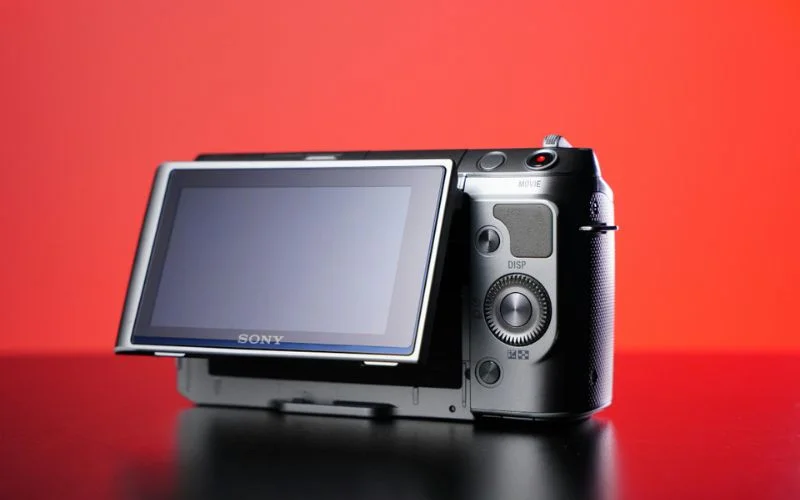
Mirrorless cameras have revolutionized photography by eliminating the mechanical mirror box that defined SLR designs for generations. It’s a fundamental change that brings several practical advantages. The most obvious is the dramatic reduction in size and weight.
Without this mechanism, mirrorless bodies are far more compact and lighter than DSLRs. That’s why they’re particularly well-suited to travel photography or extended shooting sessions where every ounce matters.
Advanced Autofocus Technology
Autofocus technology in these cameras also signifies a significant leap forwards in terms of performance.
- Phase-detection pixels are placed directly on the imaging sensor.
- Mirrorless systems can achieve focus almost across the entire frame rather than being limited to the center.
- This on-sensor approach enables advanced features like:
- Real-time eye tracking
- Animal eye detection
Explore our masterclass: Understanding The Power Of Masks In Photoshop
Electronic Viewfinder (EVF) Advantages
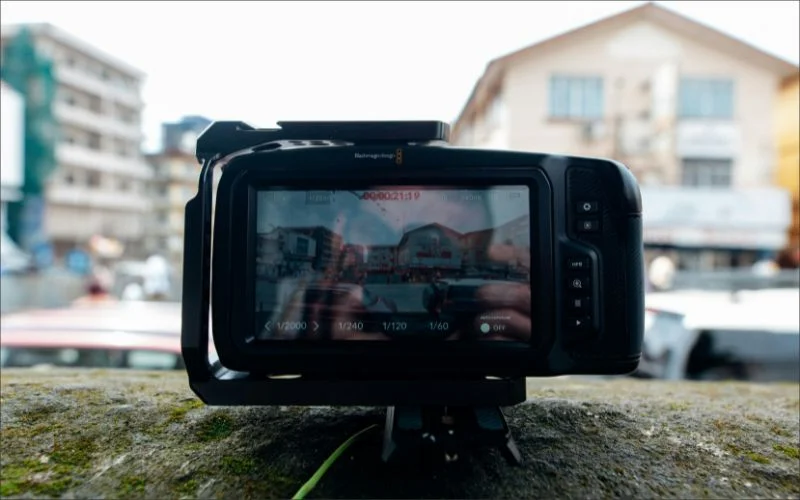
The electronic viewfinder, or EVF, changes how photographers compose and evaluate their images. Unlike an optical viewfinder that simply shows the scene through the lens, an EVF displays exactly what the sensor sees. It also shows real-time exposure and white balance adjustments.
This “what you see is what you get” approach:
- Removes so much of the guesswork in challenging lighting conditions
- Allows for more accurate composition.
Mirrorless For Video
Video is another area where mirrorless cameras really excel. Most modern mirrorless models deliver superior video features, including
- 4K and 8K recording
- Advanced autofocus that remains reliable during video capture
- In-body image stabilization (IBIS) for smooth handheld footage
- No blackouts during recording due to the lack of a mirror mechanism
Also take a look at: What Is Aperture in Photography? The Ultimate Beginner’s Guide
Why Buy Used Mirrorless Cameras?

Buying used mirrorless cameras from reputable companies like MPB gives you the option of picking up industry-changing models from brands like Sony, Panasonic, Canon, and Leica at a fraction of the cost. This makes it a great choice for those looking to upgrade without breaking the bank.
The Case For DSLR Cameras
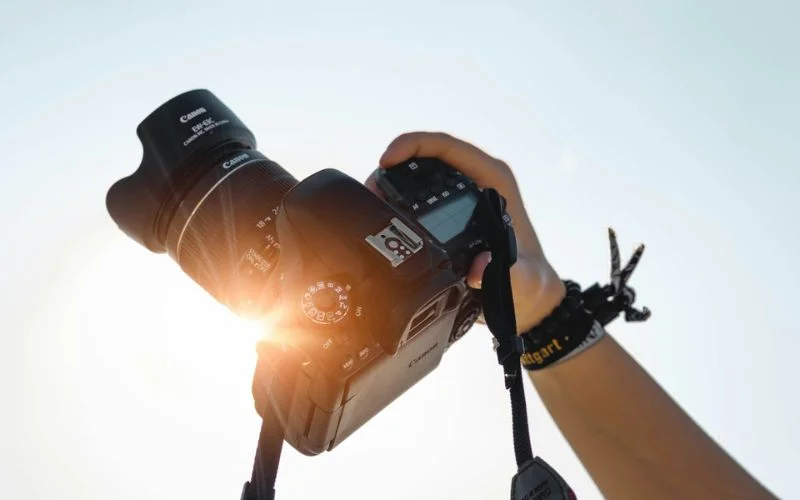
While mirrorless models have been steadily gaining popularity, DSLRs do have a few advantages that continue to attract photographers.
Optical Viewfinder Experience

The most compelling of these is the optical viewfinder, which provides a clear, lag-free, and real-time view of the scene. It does this without any additional power consumption or electronic processing to worry about. It’s a view that feels natural and responsive for many photographers, which can be less fatiguing for longer shooting sessions.
Be sure to explore: Tripod vs Monopod: Which One Truly Fits Your Photography Needs?
Longer Battery Life
Another advantage of a DSLR is their battery life. Since the optical viewfinder doesn’t need any power, and DSLRs require less electronic processing overall, they don’t burn through their battery as quickly as mirrorless cameras.
You could easily capture hundreds, if not thousands, of shots on a single charge. On the other hand, mirrorless cameras could only achieve half that. If you’re working in remote locations or don’t have easy access to charging, a DSLR may be a more practical option.
Ergonomics & Handling
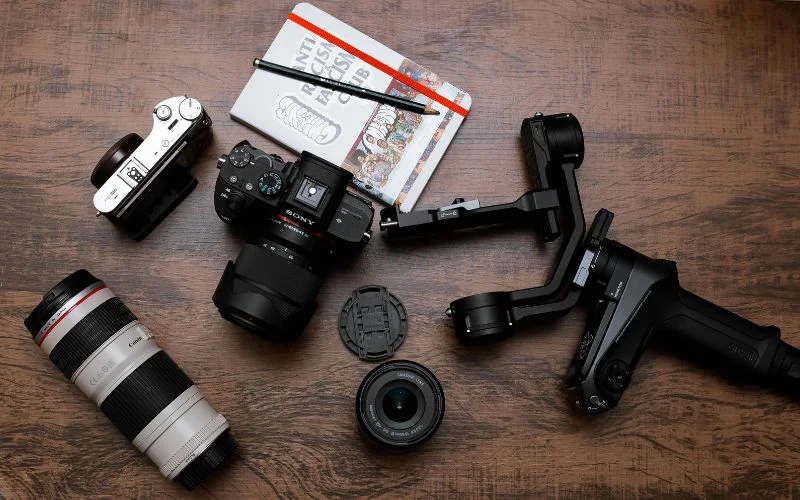
Ergonomically speaking, a DSLR provides a more substantial feel. The larger, more robust design can feel more comfortable and balanced for some photographers. The deeper grip, more physical controls, and generally more spacious layout give a more tactile experience.
Lens Compatibility
When it comes to choosing and buying lenses, DSLRs give you plenty of choice. Decades of development means there are huge selections of both new and used lenses available for every budget and purpose.
The used market for DSLR lenses is incredibly robust and reliable. So, budget-friendly photographers or those dipping their toes in the world of photography can build a comprehensive lens collection for less.
Proven Durability

The durability and legacy of DSLR technology shouldn’t be underestimated either. These are proven designs with long histories of reliability in professional environments. Professional DSLR cameras have weathered countless weddings, sporting events, and challenging field conditions. It’s this track record that gives photographers confidence in their camera kit.
Also check out: Masterclass: Lighting Setups That Always Work
Making The Decision For Your Photography Project
For many photographers, mirrorless cameras make the most sense. The reduced size and weight, hybrid photo and video capabilities, and reliable autofocus make them a dream to work with and great for on the go.
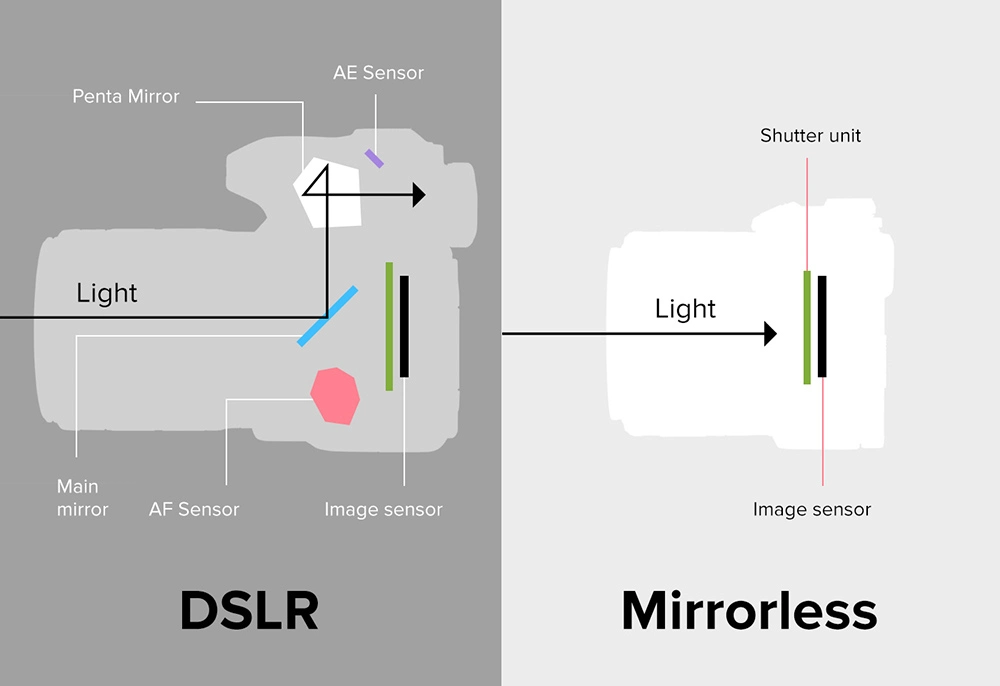
Who Benefits Most From Mirrorless Cameras?
Sports and wildlife photographers increasingly favor mirrorless systems for their subject tracking, face and eye detection, and the ability to maintain focus during high-speed burst shooting. Photographers starting fresh without legacy glass to consider can build a modern system optimized for current and future needs.
When A DSLR Still Makes Sense
That said, DSLRs do remain the better choice for specific scenarios and photographer types. Those with substantial investments in DSLR lenses and accessories, for example, will find it more cost-effective to continue with their existing set-up rather than have to invest in a whole new system.
Similarly, those who prefer the optical viewfinder experience and find electronic viewfinders uncomfortable or distracting will appreciate the DSLR’s traditional viewing method.
The Last Word On Mirrorless Camera vs DSLR
Your final thought when deciding between a mirrorless camera vs DSLR should be looking towards future trends. Major manufacturers have shifted their focus to mirrorless systems, and some have discounted DSLR development entirely.
This means the newest technologies, most advanced autofocus systems, and latest features may increasingly only be available in mirrorless bodies.
However, the DSLR platform is far from obsolete. These cameras still remain more than capable of capturing incredible shots with the right photographer behind them. And, a mature ecosystem ensures parts, support, and lenses will remain available for years to come.
Like this post? Check out more amazing photography content here.
Frequently Asked Questions
Q.1 Do professional photographers use DSLR or mirrorless?
Ans. Most professional photographers are now using mirrorless cameras, with a significant majority of them having made the switch. However, many professionals still use DSLRs, sometimes in combination with mirrorless systems, due to familiarity, cost, or specific needs like studio work.
Q.2 Is DSLR sharper than mirrorless?
Ans. No, one is not inherently sharper than the other; both DSLR and mirrorless cameras can produce images of the same sharpness if they have the same sensor and are used with the same lens.
Q.3 Which lasts longer, DSLR or mirrorless?
Ans. DSLRs typically last longer on a single charge than mirrorless cameras, with many DSLRs getting 600+ shots per charge compared to an average of 350-400 for mirrorless models.
Q.4 Is mirrorless better than DSLR for video?
Ans. For most people, a mirrorless camera is the better choice for video due to superior autofocus systems, real-time exposure preview, and a more compact design.
Q.5 What’s cheaper, DSLR or mirrorless?
Ans. DSLRs are generally cheaper, especially on the used market, because they are an older technology with a vast and inexpensive supply of lenses. Mirrorless cameras can be more expensive because they often incorporate newer technology.
